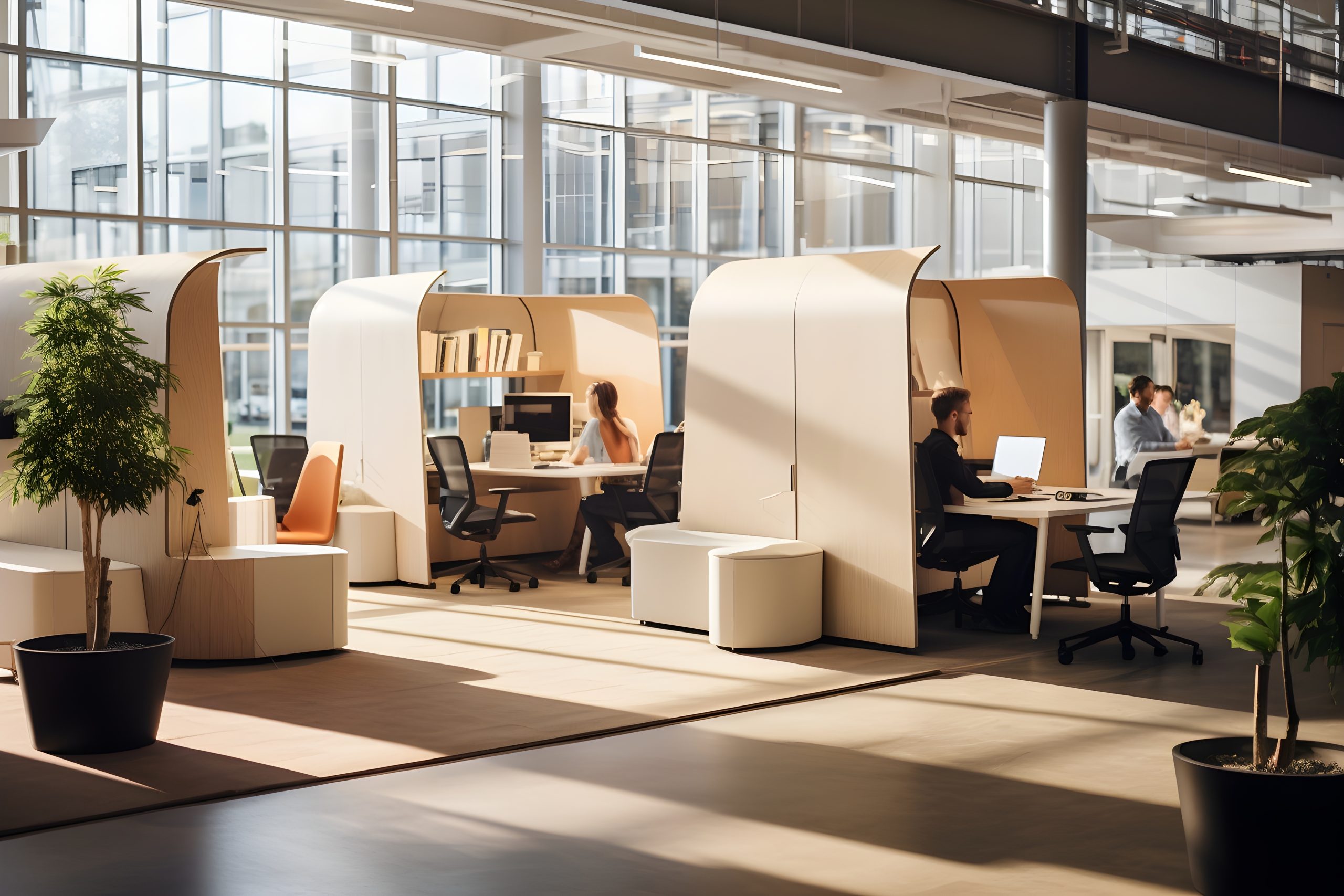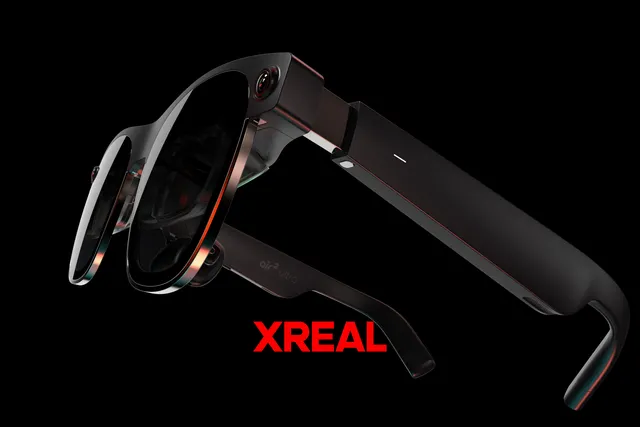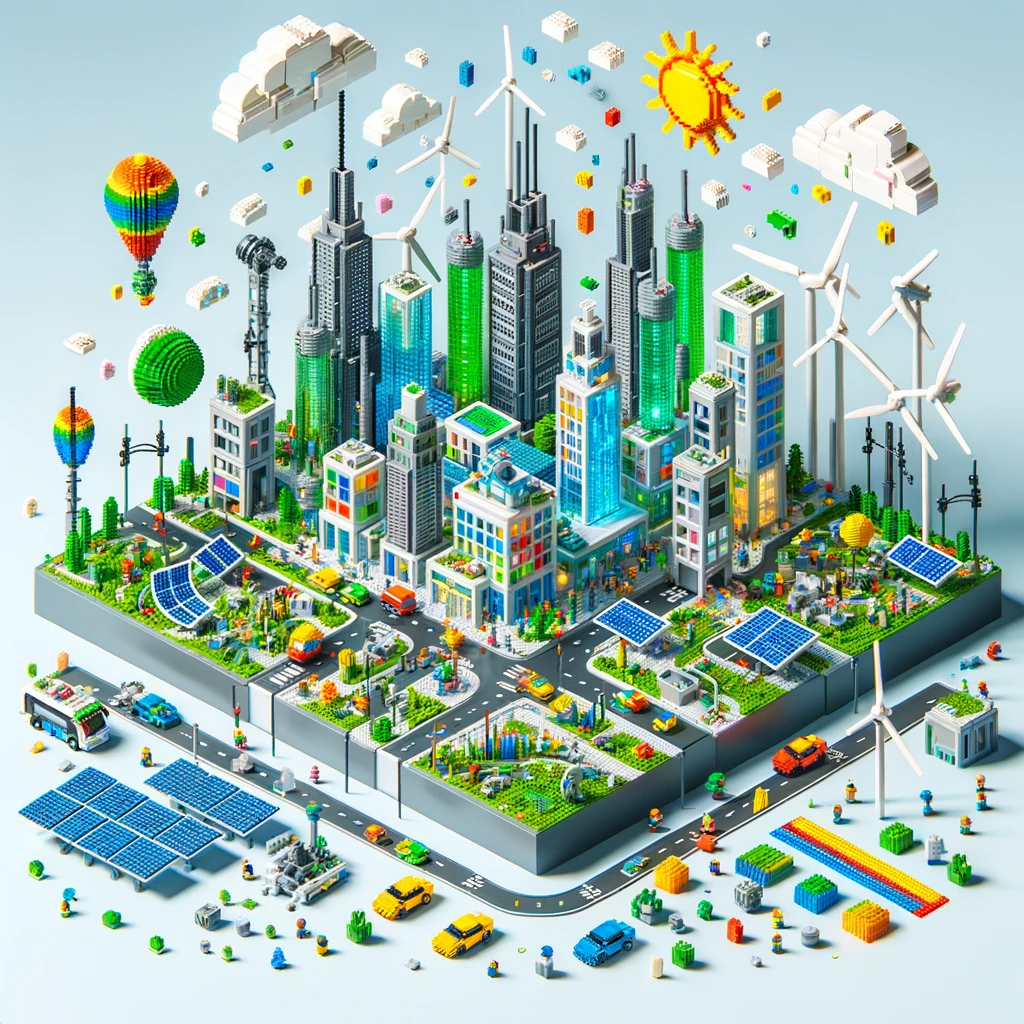In recent history the office environment has undergone dramatic transformations, shifting from traditional, rigid layouts to innovative, flexible spaces that foster collaboration, creativity, and employee well-being. Driven by rapid advancements in network and communication technology and human behaviour, this evolution reflects a broader shift in work culture and societal expectations.
The Traditional Office

The conventional office setup, often characterized by rows of desks and a clear hierarchical structure, was designed to maximize efficiency and control. This model was heavily influenced by the industrial age’s emphasis on repetitive tasks and top-down management. Not to mention in more recent history the easy placement of monitors on desks and delivery of physical power and networking connectivity. However, as the nature of work shifted from industrial tasks to knowledge-based activities and wireless networking became more prolific this traditional layout became less aligned with the needs of the workforce and the dynamics of modern business practices.
Enabling Flexibility and Mobility
The advent of personal computing in the 1980s began to challenge the old paradigms of workplace design. Computers decentralized the flow of information and reduced the need for centralized, physical filing systems and archives. However, it was the Internet’s proliferation in the 1990s and 2000s that truly revolutionized the workplace, introducing a new era of connectivity.
Technology such as high-speed internet, cloud computing, and real-time communication platforms has decoupled work from specific locations, enabling flexibility that was previously unimaginable. Research shows modern employees, particularly younger generations like Gen Z and Millennials, rank fast Wi-Fi and access to the latest digital tools as their top technological needs in the office. This shift has made remote work and digital nomadism prevalent, challenging the traditional notion that productive work can only happen within the confines of an office. Embodying the tag line from the workplace technology company Citrix that “Work is not a place”.
Redesigning for Collaboration and Innovation
As the link between physical presence and productivity weakens, office designs of forward-looking companies have begun to reflect the new priorities! Collaboration, innovation, and employee satisfaction. Modern offices now feature open-plan layouts, communal areas, and versatile spaces that can easily be reconfigured according to the needs of the moment. These spaces are designed to facilitate not just individual work but also spontaneous interactions and collaboration sessions, which are crucial for innovation.
Modern workspaces now frequently incorporate elements that can help attract and retain talent, such as biophilic design elements that connect the indoors with nature, and wellness-cantered features like quiet zones and wellness rooms. These trends underscore a growing recognition of the role physical environment plays in enhancing worker productivity and health.
Future Office Trends
Looking forward, the further integration of smart technology and further moves towards sustainability are set to dominate the evolution of office spaces. Smart offices will use IoT devices and AI to manage resources efficiently, optimize space usage, and personalize the work environment for individual comfort and productivity. These technologies can see if premium meeting room space is being utilised properly adjust lighting, temperature, and even monitor air quality in real-time, ensuring an optimal working environment.
Sustainability has also moved to the forefront of workplace design, driven by both environmental concerns and employee preferences. Sustainable practices in the office, from energy-efficient appliances to green spaces, not only contribute to the health of the planet but also enhance the well-being of employees, thereby becoming a key factor in attracting eco-conscious talent.

Above: Modern networking tools from Cisco and Aruba (HP) can triangulate and track office attendance. This combined with data on meeting room occupation can help any business identify if precious meeting room resource is being used properly and not being consumed by reoccurring meetings where no attendee is in the office.
The evolution of the modern workplace is an ongoing narrative shaped by technology, cultural shifts, and an increasing emphasis on sustainability and worker well-being. As businesses continue to navigate these changes, the insights business should be collecting and actioning from their staff will be invaluable in crafting spaces that not only meet the demands of today but are also adaptable to the unknown needs of tomorrow. The future office, will be a fluid, ever-evolving space that responds dynamically to its occupants’ needs, fostering an environment where work is not just a place one goes, but a space where one thrives.




